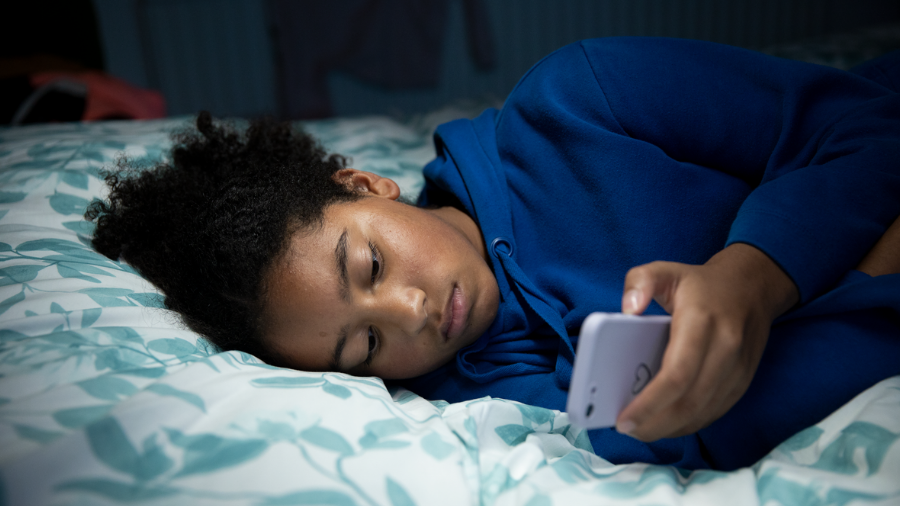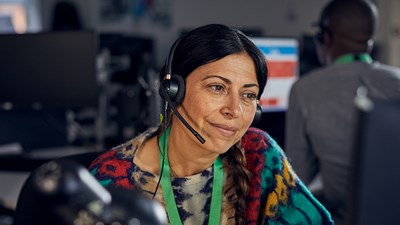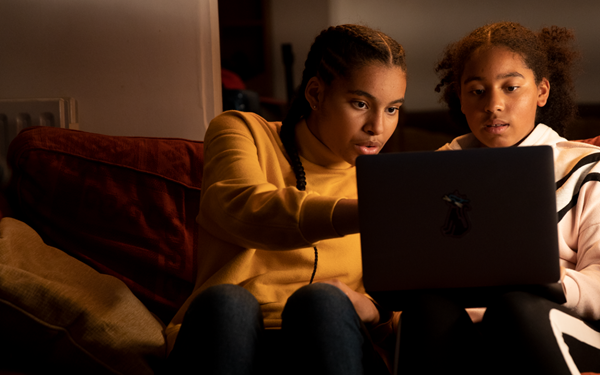Why might kids want to chat to people online?
- To make friends if they are feeling isolated or lonely
- To talk to people with the same interests and experiences as them
- To talk tactics for gaming
- To find support and advice
Ask your child whether they chat with people online and what they enjoy about it. Knowing their reasons can help you with conversations about how to keep them safe.
Online chat rooms and kids with SEND
There are some online platforms that have been created specifically for children to chat with other people their own age such as PopJam. However, they are often not moderated and don’t require much information to sign up. This means it can be easy for adults to access them.
These sites are easy to find on Google and because they say they are ‘kids only’, a child might sign up thinking that it’s ok. Children who might not use social media yet, might be interested as a way to chat to people online and make friends.
You should talk to your child about people on sites like this. Tell them to come to you before they start using a new app, site or game and use the Family Agreement to support this. These sites can be risky and we wouldn’t recommend children under 18 use them.
Know how to block, mute and report
When someone sends you something upsetting online, the best thing to do is stop responding and remove yourself from the conversation. Showing your child how to report, block and mute users on their favourite platform is a good way to help them feel prepared if they ever receive something unkind online.
"It is important children feel they can report comments that have upset them."
Parent of an 18 year old

Remind your child to report any comment, video, or image they see that upsets them or that could upset someone else. Muting is an option available on some platforms such as Instagram and Twitter. When you Mute an account the other user can still send you messages and see your account, but you won’t be able to see their posts or messages on your timeline or inbox. It can also be a good way to hide a message without notifying the other person.
Blocking is a good tool to use if your child is contacted by someone they don’t know offline or someone that keeps sending them unkind messages. While muting stops you from seeing what someone says unless you look for it, blocking stops them from being able to communicate with you or see what you are doing.
Apps that connect you with adults
Some children might want to use apps like Kik and Hoop to chat to others online. These apps are similar to dating apps and use your location to connect you with people nearby. It is very likely that children could be contacted by someone they don’t know on apps like these.
- These apps use video chat so it can be easy for children to come across images, videos and messages they could find upsetting and video chat with someone they don’t know.
- It is easy for kids to get access to these apps by putting in a different age when they make an account.
- Omegle is a free online chat room that randomly connects you with people you don’t know via video and text chat.
- You are not required you to register so it’s easy for kids to access it. Parents and carers should be aware that there is an ‘unmoderated’ area of the site that contains adult conversation and inappropriate content. This site is not suitable for kids under the age of 18.
- Talk to your child about whether they have used Kik, Hoop or Omegle or similar apps. If they have, talk about the risks involved. If they haven’t, talk through why these apps and sites are risky.
Photo Symbols - Are you used to using Photo Symbols to help your child? We have a Talking to people online conversation starter to help you.
How to help children with SEND play online games safely
Many parents and carers worry about who their child might meet when playing games online or using social media. Look at setting up parental controls and privacy settings to interact with others safely, starting with playing with those they know offline or in a space that is just for them and their friends.
"If you know other parents, set up set times for playing in secure rooms."
Parent of a 13 year old
For social media, if age-appropriate, this can be a private account which connects your child to those they know offline, like friends from school or family members. Talk to your child about what is appropriate for them to share on social media and agree some rules around when they can use it. Remind them that everything they post online can be traced back to them so it’s important to think before you post anything on your account. And make sure they know they can always come to you if they have any questions about anything they see online.
Most devices have settings that let you set restrictions around what sites your child can access. Be open with your child about these settings if you choose to enable them and explain that they’ll help keep them safe when they’re spending time online. Filling in our Family Agreement is a good way of supporting these conversations.
Are you used to using Photo Symbols to help your child? We have a Helping your child with cyberbullying in games conversation starter to help you.
Things to look out for
Talking to people online can be an important lifeline for some children, especially if they struggle to make friends in-person.
But sometimes friends can take advantage or be unkind. Keep talking to your child about their friendships online and let them know they can talk to you about anything that has upset them.
Being exploited online could include:
- Pressuring people to give money
- Asking someone to share things about themselves that should be private
- Asking someone to share images, videos or livestreams that are considered sexual.
Use our Friendships activity to support these conversations.
Activities to do with your child
We have worked with Ambitious about Autism and parents and carers who have children with Special Educational Needs or Disabilities (SEND) to create activities to help talk about online safety.
- Sharing personal details
- Friendships online
- One-page profile
- Cyberbullying for children with SEND visual article
- Talking to people online for children with SEND visual article
Information produced in partnership with Ambitious about Autism, with the support of O2 during their online safety partnership with us.







Using social media
Social media can have a real draw for children and young people. However, the ‘unwritten rules’ of social media can be very confusing. This can be especially difficult for young people with SEND.
Children know that saying unkind words isn’t a nice thing to do. But social media can be more subtle in the way it can cause upset. Children can exclude others from groups online or on group chats. And sometimes something as little as not commenting on or liking a photo can cause an argument.
Talk to your child about their understanding of the ‘unwritten rules’ of social media and talking to people online. Ask them if they have ever felt left out, excluded, or confused by how other children use social media.
Friendships online for children with SEND
Use our activity to help talk about friendships online with your child.
The online world makes it easier for people to be anonymous. People might behave in a way they wouldn’t do offline and say unkind things they wouldn’t say to someone’s face. When someone repeatedly sends unkind messages to another person this is called cyberbullying or trolling.
Accounts or people that behave in this way, might not always be telling the truth about who they are. They might use another person’s pictures, a different name, a different location or be lying about their age. This can make it harder for the person sending the messages to be reported or blocked from the platform.
As well as speaking to your child about people they haven’t met, you should also remind them that even people they know offline, such as friends from school or clubs, might behave differently online.
For example, someone might pretend to be a friend but is using that relationship to be mean to, manipulate or exploit someone who is more ‘vulnerable’ than them. A person might use the social isolation or low self confidence that someone has to their advantage.
Make sure to regularly check in with your child about who they’re talking to online and what kind of things they chat about. Exploitative friendships, sometimes known as ‘mate crime’, can happen in different ways but might include:
To support your child, help them build an understanding of how some people can behave online, and remind them that you’re always there for them if they want to talk. Our Friendships activity could help with this conversation.